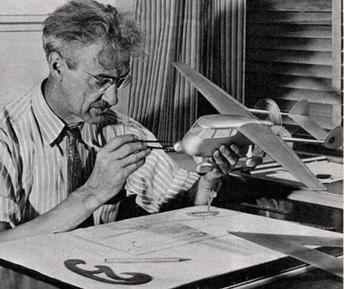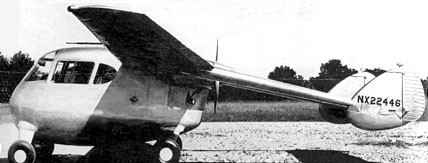
“Stoudt predicted it would go 70 miles on the ground and 100 miles an hour in the air.”
A flying car in every garage is a technological dream deferred and probably for good reason: They’re not necessary, and there are no economic forces driving the creation of a commercially viable model. But that never stopped the dreamers among technologists, including transportation designer William B. Stoudt, from attempting to realize such modes of transport. An article from the August 5, 1943 Brooklyn Daily Eagle about the beginnings of what was officially known as Stoudt’s “Skycar” series, a succession of hybrid vehicles that never reached the market:
“Thee new modes of travel that would provide the average man with a plane that would land in his back yard and two types of craft to either fly or run on the ground are being developed in the laboratories of the Consolidated Vultee Aircraft Corporation, it was revealed today.
William B. Stout, a pioneer airplane designer, has designed for the company three vehicles for everyday use–the ‘helicab,’ a helicopter-type flying machine, the ‘aerocar’ and the ‘roadable airplane,’ both of which operate in the air and on the ground.
The ‘helicab’ has the feature of vertical ascent and the ability to land in a small space. The ‘roadable airplane’ has four wheels and folding wings which Stoudt believes would provide an ideal light delivery truck for a business man. It would be capable of going 35 miles an hour on the ground and 120 miles an hour in the air, with a flying range of 400 miles.
The ‘aerocar’ is designed along the lines of an automobile with detachable wings. Stoudt predicted it would go 70 miles on the ground and 100 miles an hour in the air.”
Tags: William B. Stoudt

